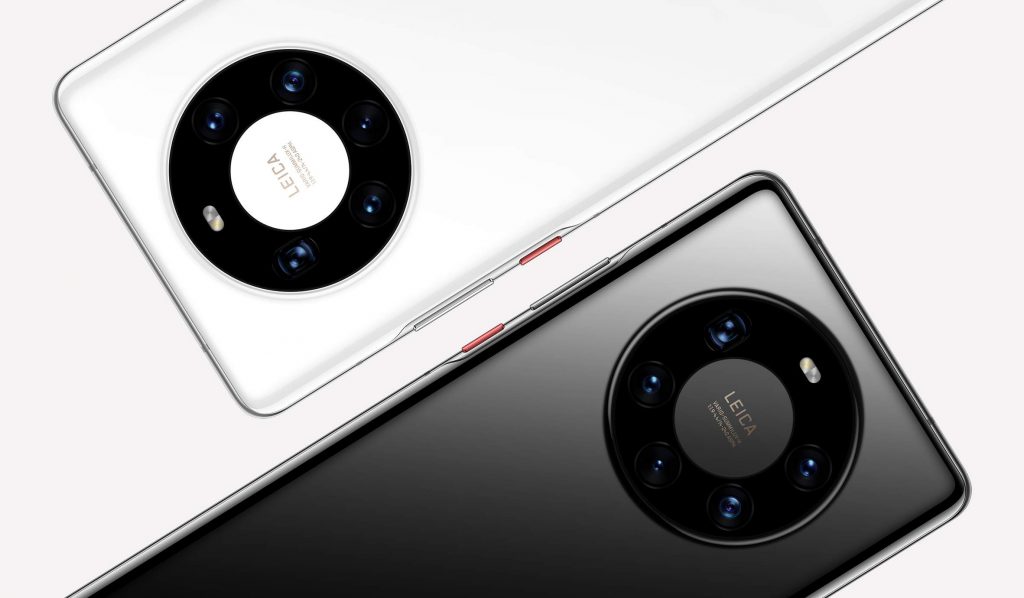It’s amazing how a lack of Google apps and GMS hasn’t shown any signs of slowing Huawei down. The smartphone maker and telecoms company made it to the top spot in smartphone sales during a global pandemic. Now, it has announced its new lineup of HMS devices, the Mate 40, Mate 40 Pro and Mate 40 Pro+. There’s also the company’s Mate 40 Pro RS edition, but we’ll focus on the main (actually affordable) options here.
Like we’ve seen on most smartphones launched in 2020, the Huawei Mate 40 range will come in 5G variants. This will make them speedier in terms of network speeds. But you’re not here to hear (even) more about 5G — here are the Mate 40s.
Meet the Mate 40
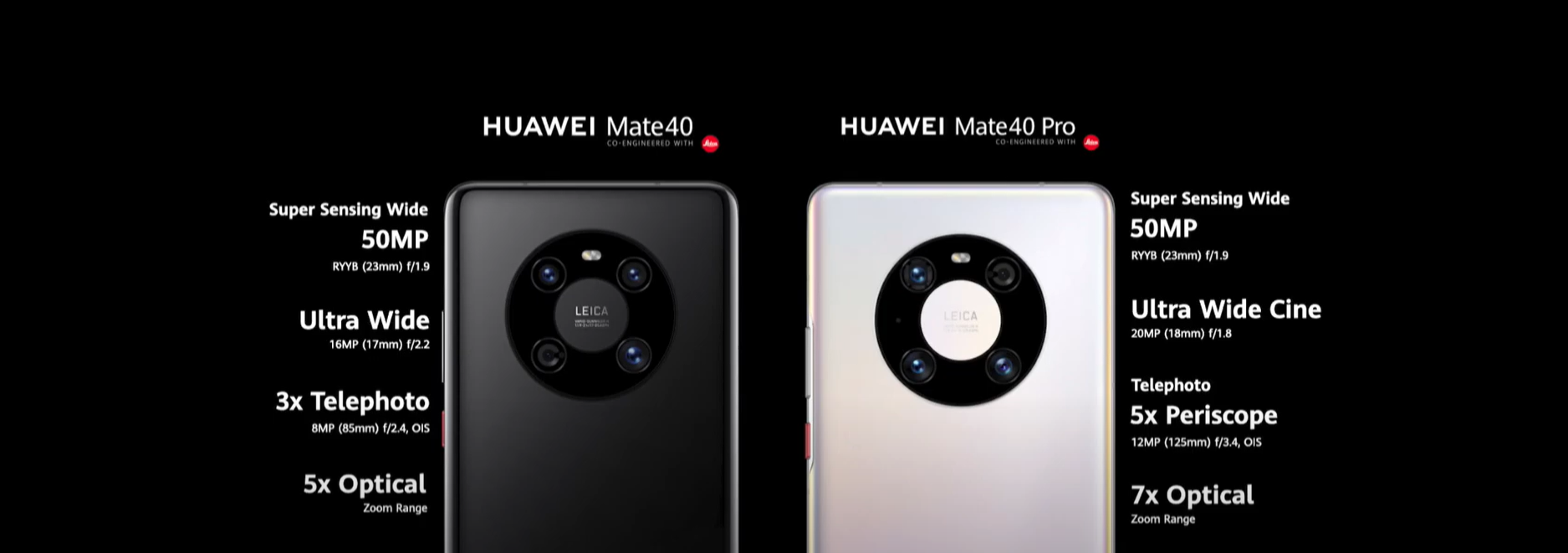 Coming in as the base model in the range, the Mate 40 features a 6.5in Flex OLED display with a resolution of 2376 x 1080 and a 90Hz refresh rate. It features a single hole-punch front-facing camera that allows for 2D face unlock capability, unlike the Pro’s 3D sensor tech.
Coming in as the base model in the range, the Mate 40 features a 6.5in Flex OLED display with a resolution of 2376 x 1080 and a 90Hz refresh rate. It features a single hole-punch front-facing camera that allows for 2D face unlock capability, unlike the Pro’s 3D sensor tech.
Powering the Mate 40, Mate 40 Pro and the Mate 40 Pro+ is the high-end Kirin 9000 5G chip developed by Huawei. They’re really making this work, as it’s the last of the company’s chips before it cannot produce through its preferred chip manufacturer anymore. But this one’s a beast. Its 5nm octa-core architecture features some insane processing chops, and some preliminary testing on AnTuTu shows it’s one of the most powerful smartphone chips around. We’re excited to see this processing unit in action.
On to the camera. This is where the Mate series generally shines, and we can’t wait to test out these monsters. The Mate 40 comes in with a 50MP main sensor, a 16MP ultra-wide, an 8MP telephoto and a zoom lens that supports up to 5x optical zoom.
The new free-form optical lens announced by Huawei today is a welcome update to ultra-wide camera tech. It uses an array of lenses to remove unnecessary distortion in a wide-angle shot. This lens is fitted in a few configurations across the Mate 40 range.
It is powered by a 4,200mAh battery, unlike the Pro that’s got a slightly larger power pack. Huawei’s also announced new faster charging, coming in at 50W wireless SuperCharge as well as 66W on-cable speeds.
Meet the Mate 40 Pro
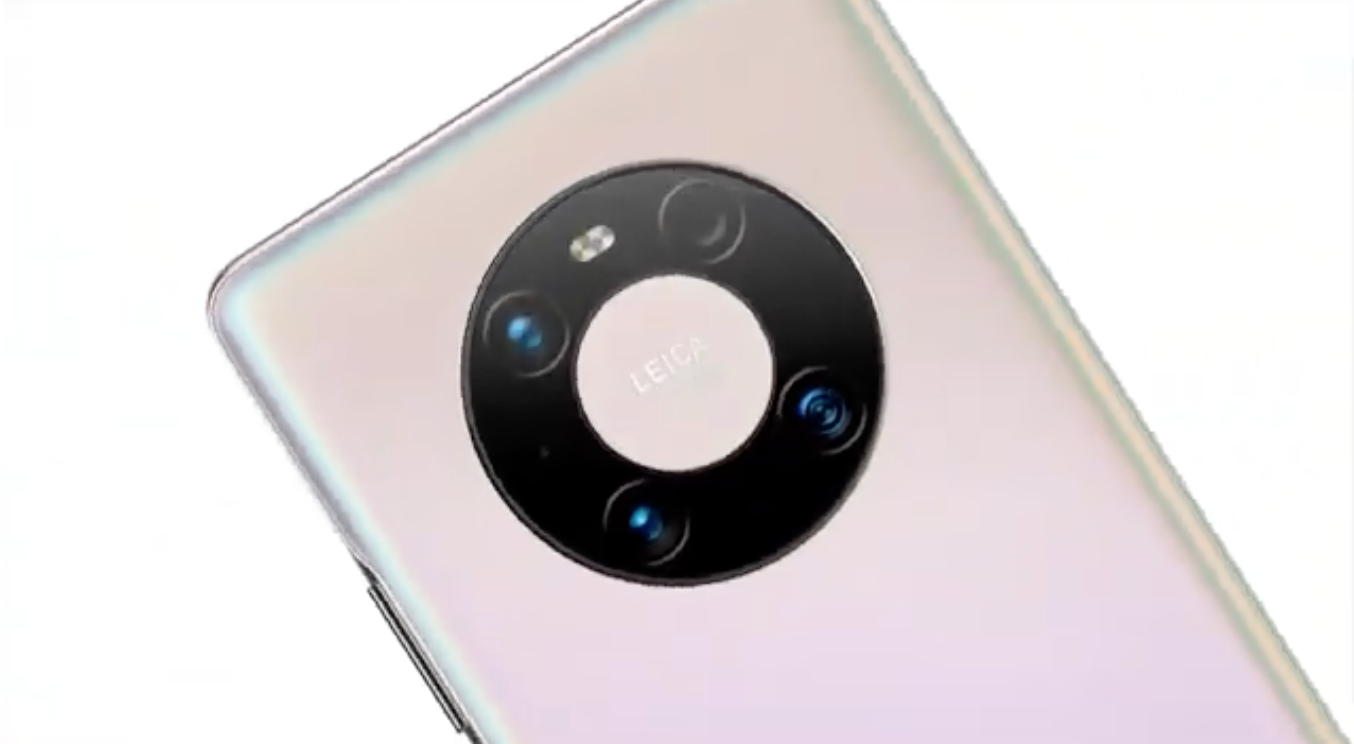 The Mate 40 Pro features a very Mate-esque 6.7in Flex OLED (Super-HD) waterfall display, an in-display fingerprint sensor and a 90Hz refresh rate. We would have loved to see a 120Hz display here. You also get the cutout selfie cam up front which features a 13MP camera, as well as a ToF sensor for depth-sensing face unlock features.
The Mate 40 Pro features a very Mate-esque 6.7in Flex OLED (Super-HD) waterfall display, an in-display fingerprint sensor and a 90Hz refresh rate. We would have loved to see a 120Hz display here. You also get the cutout selfie cam up front which features a 13MP camera, as well as a ToF sensor for depth-sensing face unlock features.
It’s fitted with a 4,400mAh battery that’s bound to last a full day and features 50W wireless SuperCharge as well as 66W on cable. Like its predecessors, you also get reverse wireless charging tech that’ll boost your buddies’ devices when they need it most. Powering this one, you get Huawei’s Kirin 9000 5G.
The camera’s where it’s at though. Around back you’ll find the circular camera module (it looks reminiscent of early-2000s iPods) that houses a 50MP UltraVision sensor, a 20MP ultra-wide sensor, a 12MP 7x optical zoom and a 12MP periscope lens. Video footage can be captured up to 8K, if you’re so inclined.
It also features 8GB or 12GB LPDDR5 RAM, comes in various storage variants (128GB, 256GB and 512GB) with the option to expand with Huawei’s nano-SD slot.
Meet the Mate 40 Pro+
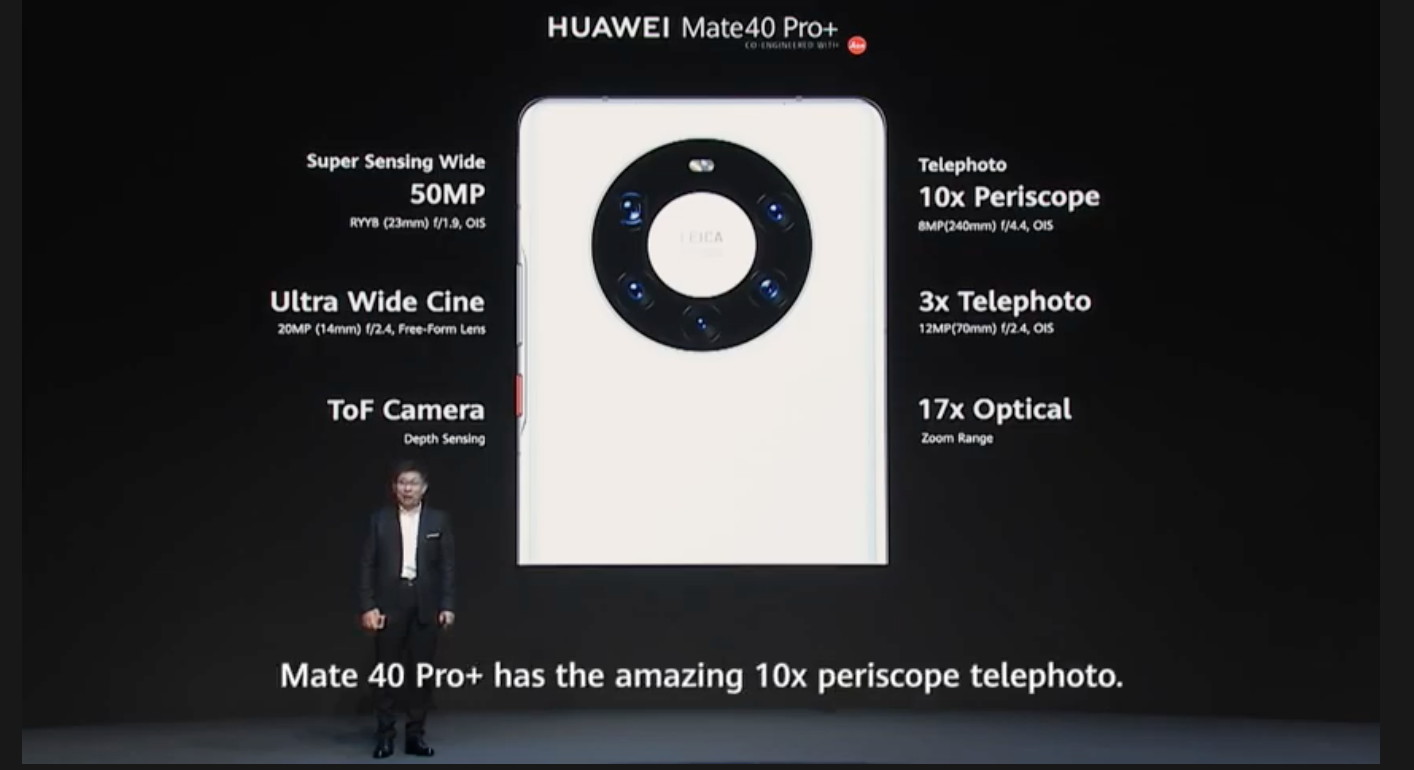 In addition to all of the specs listed above (the Pro+ and the Pro have a lot in common), the Pro+ features a few camera upgrades. Granted, Huawei always pushes its camera tech for this series, so we’re here for the wackier upgrades.
In addition to all of the specs listed above (the Pro+ and the Pro have a lot in common), the Pro+ features a few camera upgrades. Granted, Huawei always pushes its camera tech for this series, so we’re here for the wackier upgrades.
The Pro+ is fitted with an eye-watering five camera sensors around the back. Here you get the main 50MP wide, a 20MP ultra-wide cine, a ToF lens for improved depth, a 10x periscope, a 12MP telephoto and 17x optical zoom capability. That’s… that’s a mouthful.
That’s also quite impressive seeing as the Mate 4- Pro only features an optical zoom capability of up to 7x, and here it goes up to 17x. No doubt we can’t wait to play with this shooter.
No Google? No problem!
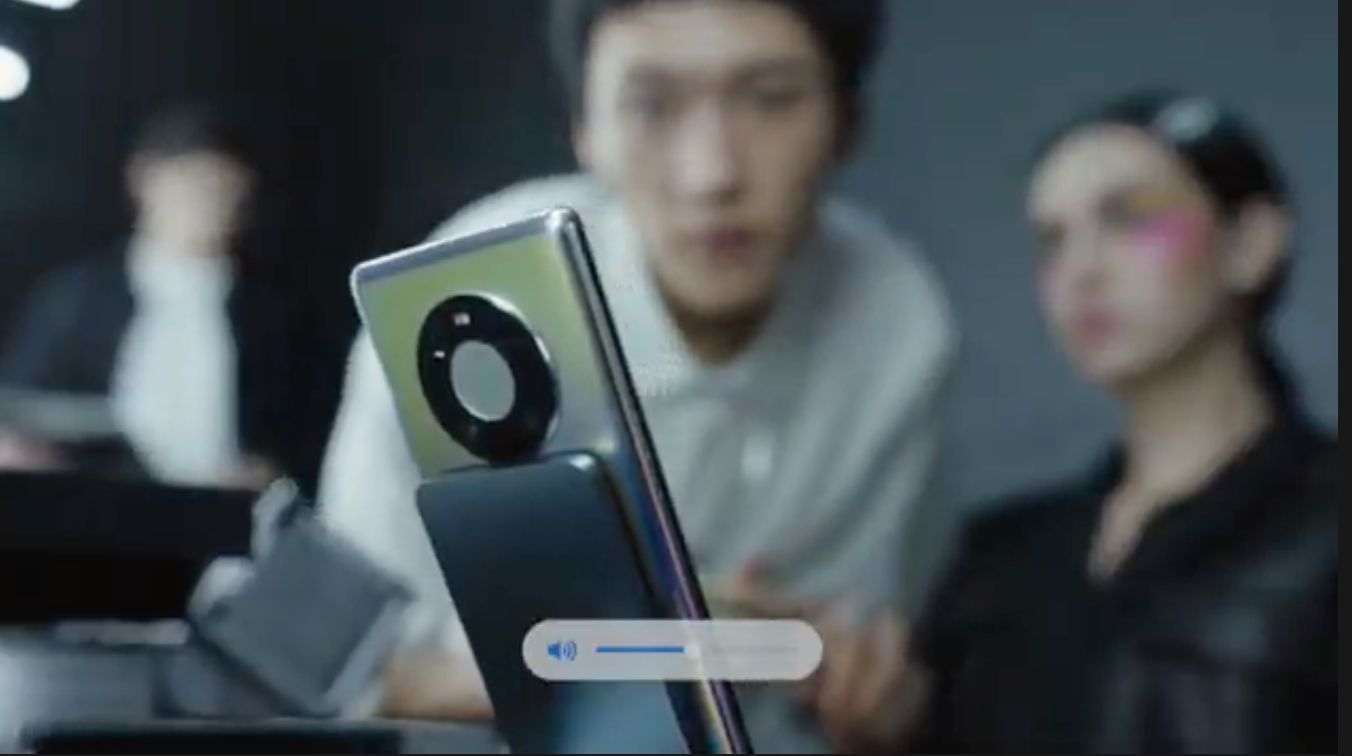 Even though it doesn’t come with Google’s suite of apps or GMS support, it has access to Android open-source software, so the devices will all launch with Android 10 as the main operating system. Huawei’s EMUI 11 will be present — an OS skin that we have tested and found very useful and seamless.
Even though it doesn’t come with Google’s suite of apps or GMS support, it has access to Android open-source software, so the devices will all launch with Android 10 as the main operating system. Huawei’s EMUI 11 will be present — an OS skin that we have tested and found very useful and seamless.
You’ll also have access to Huawei’s HMS suite of apps, as well as the Huawei AppGallery. Its own app store offering has been bolstered in recent months, bringing a whole lot of local apps to South African users. Turns out you don’t need Play Store to get your favourite apps, eh?
Huawei’s also announced a bunch of software updates and features that are aimed at efficiency and productivity. The coolest of which is probably Air Gestures, using its new 3D sensor in the punch-hole. Many have tried this before, but gestures rarely ever work right. If it does this time around, it’ll be an intriguing feature.
There’s also Celia, Huawei’s own voice assistant, organisation modules for apps, new fast-charging tech, eye-tracking/wake-up and a new maps app using Petal.
The Mate range is priced in Euros, but we’ll update once we have local pricing and availability from Huawei South Africa. The Mate 40 comes in at EUR900 (converted to around R17,500), the Mate 40 Pro’s at EUR1,200 (around R23,200) and the Mate 40 Pro+ at EUR1,400 (around R27,000).

